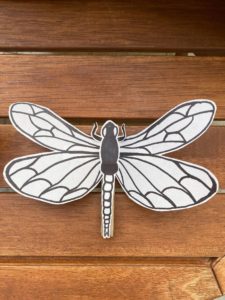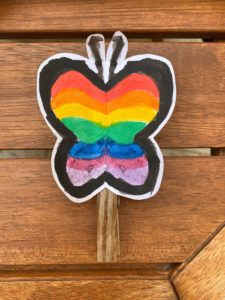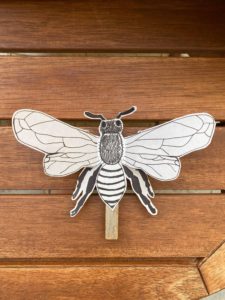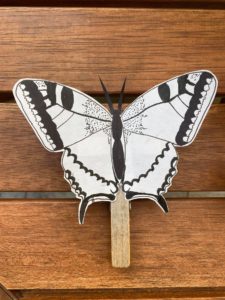Insects make up around 75% of all the animals that we know about on this planet. Scientists have documented more than a million different kinds of what we call species of insects from all around the world. Some think that there might be up to another 10 million different species for us to discover.
Check out this video to see just how many of them there are and why:
Insects have an important role on our planet and the world as we know would be very different without them. They are very good at being pollinators for many of the flowers in our trees and plants. Some of these flowers then grow into the fruit and vegetables that we eat because of these insects.
Insects themselves are food to many other animals such as amphibians, reptiles, birds and mammals. Have you ever eaten a cricket? During our Halloween event last year, we had a few for people to try, most visitors thought they tasted quite yummy. Would you have tried one?
Several features make insects different from other animals. Let us see how we might be able to tell them apart. All insects have 3 pairs of jointed legs. That means that in total they have 6 legs. They also have an exoskeleton. This is just like an armour that covers their whole body. It protects them from the outside world and helps them to survive in places (habitats) where other animals cannot. All insects also have a body that can be split up into three different parts. The head, the thorax and the abdomen.
On their head most insects have a pair of compound eyes and many also have a pair of antennae that help them see and find their way around.
A large number of insects also have wings. These wings are attached to the middle part of their body, the thorax. This part of the body has very strong muscles that help the insect move its wings and legs. Insects that have wings which you might be already familiar with are butterflies, moths, bees, flies and mosquitos.
One thing which you might notice as you look at all these different kinds of insects is that they all have very symmetrical shapes. Most Insects have what is called Bilateral Symmetry. This means that if you had to draw a line through the middle of their bodies you will see that both sides are the same. It’s as if one side is a mirror image of the other one.
Can you think of another animal that has bilateral symmetry which is not an insect? Spiders are one of those, fish too and so are mammals such as yourself. Yes, humans also exhibit bilateral symmetry. If you want to know more about symmetry in nature watch this:
Now that you know all this about insects and symmetry why don’t you make your own symmetrical drawing using the instruction sheet below. After you have finished your drawing why not try your hand at making it move. Use the instruction sheets for more details on how to make both. All you need is a piece of paper, some paint, a clothes peg, scissors and some sticky tape.
Instruction Sheets (download PDF to print):
Making a Symmetrical Drawing in PDF
Making a Fluttering Butterfly in PDF
Share your creations with us through social media, tag @esploramalta as we would love to see what you have created.
The inspiration for the above instruction sheet came from a video posted by Rob Ives.
Our Creations:
 |
 |
 |
 |